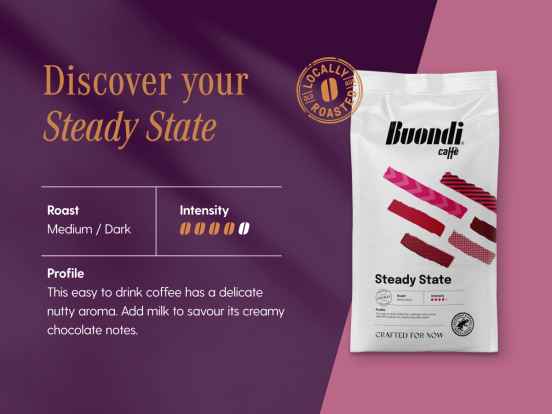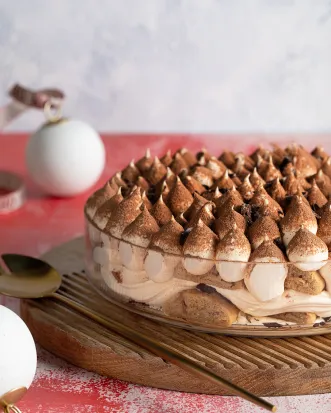Oil is an essential element of many cuisines – it’s an ingredient that brings flavour and facilitates any number of cooking methods – but it also plays an integral role in the story of their development. By Madeline Woolway.
From the Mediterranean to the Middle East and North Africa, oil is one of the most crucial ingredients in many cuisines.
“It’s everything to them,” Roy Ner, executive chef at Sydney’s Nour told Hospitality. “If you want to understand North African and Middle Eastern cuisine, you have to look back to when we didn’t have fridges. In a hot environment like that you had to have oil to preserve.”
Olive oil is the namesake of new Sicilian restaurant, Olio, which opened in Sydney’s Kensington Street precinct in January. For chef Lino Sauro, who sources oil from his family’s farm and a neighbouring farm in Sicily, olive oil is a passion.
“I couldn’t make anything without olive oil,” he said. “In Sicily olive oil is considered so precious, it’s the base of many dishes.
“We normally don’t use it much for cooking, even though I’m not against cooking with olive oil – if you use it properly you can have amazing results – but mostly I use it for seasoning vegetables, salad and pasta, dipping bread, and poaching seafood or meat. It’s an amazing marinade for raw fish or vegetables and for cooking at low temperatures.”
 Charred octopus, Yemeni bread, pencil fennel and olives from Nour.
Charred octopus, Yemeni bread, pencil fennel and olives from Nour.
Pure oil
While the stratification of olive oil into extra virgin, virgin and pure or refined classes is a concept well-known to most, there are many variables that impact its attributes.
“It depends on the area it’s from. It normally requires a lot of sun and a lot of water, but, for example, oil from a hot climate like North Africa, where they make very good olive oil, is different to the oil from Tuscany, where it’s cooler but still gets a lot of sun,” said Sauro.
“It depends whether [the olives] are from a hill or next to the sea… a lot of variables affect the qualities of oil, but it’s not about good or bad, it’s just different. [These variables] can change the aroma, they can change flavour, they can change the acidity.”
 Caponata tiepida con ricotta from Olio. Image: Lauren Commons
Caponata tiepida con ricotta from Olio. Image: Lauren Commons
Like wine, the qualities of olive oil will change based on terroir and olive variety, but, says Sauro, it’s harder to understand because it’s not given as much attention.
“It’s become like it’s just something for seasoning or cooking. In the last few years it’s become a prime ingredient, but it requires a lot of attention and a lot of knowledge to understand whether it’s good or not. That’s why we now have olive tasters and trainers. In Singapore [where Sauro operates restaurant Gattopardo] we do a lot of food pairing with olive oil programs,” he told Hospitality, adding that similar dinners could be implemented at Olio.
“Chefs should understand the qualities. It’s not enough to know the price and the colour, it’s good to also know the texture and the acidity and you should know where the olive oil comes from – what farm it was produced on.
 Grilled calamari al limone, ginger, fennel and lemon vinaigrette from Olio. Image: Lauren Commons
Grilled calamari al limone, ginger, fennel and lemon vinaigrette from Olio. Image: Lauren Commons
“My father told me since I was young, ‘when you take a spoon of olive oil, if you cough a couple of times it means it’s very good. If you get just the normal fat sensation then maybe it is not. The acidity must make you cough. This is the power of olive oil.’”
This knowledge is important not just because of the diversity of olive oil, but also because fake products are pervasive.
“Unfortunately it’s a good market, it’s big business – that’s why you need the knowledge, to really recognise what you’re using,” said Sauro.
 Sgombro honey marinated Spanish mackerel from Olio. Image: Lauren Commons.
Sgombro honey marinated Spanish mackerel from Olio. Image: Lauren Commons.
A brief history of oil
When creating Nour’s charcoal octopus dish, Ner and his team wanted to tell a story that combined Yemeni and North African flavours. Just as oil played an historic role in the development of cuisines from North Africa to the Middle East, it has an integral part in each element of the dish that combines Yemeni bread, pencil fennel, olives and harissa oil.
“Every cuisine harnessed the produce around them to make oil and through that process they adapted their cooking methods to the oil they had,” said Ner.
“The Yemenite are champions of dough-making. Basically, hundreds of years ago they started making their version of puff pastry, but they didn’t have butter – they had oil. So they make the dough by over whipping corn oil and folding it.
“The harissa oil in the dish is made using house-made harissa paste that has been thinned down with extra virgin olive oil and lemon juice to soften it, because otherwise it’s quite strong for the Australian palate. The whole idea is to give an idea of the flavour and the heat with overpowering anything. It has to be a complete dish.
“In that particular dish oil isn’t just part of the story, it’s the binding, the thing that brings the whole dish together.”
Infused with flavour
While olive oil has complexity enough to stand on its own, chefs around Australia are infusing some oils with innovative flavours.
“For our new menu we’re working on a number of new dishes. One from the vegetarian section will use smoked herb oil as the dressing,” said Ner. “Coriander roots, dill roots, turmeric root, confit garlic and bay leaf are all infused into olive oil and then cold smoked for three hours.
“For me this is about taking elements from around the Middle East and binding them together for the dish. I think vegetarians have been neglected and I want to spoil them with those flavours.”
 Fish of the day, avocado, daikon, aniseed myrtle and charred kelp oil from Harvest Newrybar.
Fish of the day, avocado, daikon, aniseed myrtle and charred kelp oil from Harvest Newrybar.
At Harvest Newrybar in Byron Bay, executive chef Bret Campbell has experimented with a variety of oils including a number made with different Eucalyptus leaves, like strawberry gum, cumin eucalyptus and peppermint gum. The current menu features charred kelp oil.
“We make it in-house,” Campbell told Hospitality. “We collect fresh kelp from the beach, wash it well, char it in our woodfire oven, [and then] to finish we blend with the oil till fine and strain it.
“We were playing with ideas for kelp and charred some for vinegar, and I thought it would go well in oil too, so we did it and it worked. Everyone loves the colour and is intrigued with the flavour. It’s almost black because of the charring, and it has caramel, ocean and seaweed notes on the nose. There are subtle ocean and salty seaweed flavours with caramelised notes.
“The dish also has the charred kelp vinegar, which it pairs really well with to round out the dish. It’s about enhancing or carrying the other ingredients.”
Filed under
Sponsored Content

Celebrating coffee moments with Buondi
Sponsored by Nestle Professional

Discover Bega’s foodservice range of cream
Sponsored by Bega
Trending Now
Resources
Lorem ipsum dolor sit amet, consectetur adipiscing elit. Fusce ac ornare lectus. Sed bibendum lobortis...
Lorem ipsum dolor sit amet, consectetur adipiscing elit. Fusce ac ornare lectus. Sed bibendum lobortis...
Sign up for our newsletter
